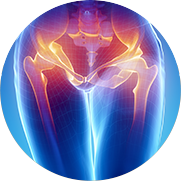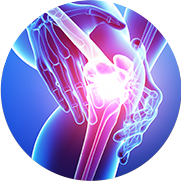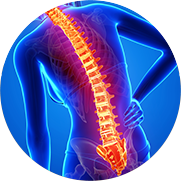What is the elbow?
The elbow is a hinge joint comprised of 3 bones – humerus, radius and ulna. Ligaments hold the bones together to provide stability to the joint. Muscles and tendons originate and insert onto the bones around the elbow to provide force to move the bones and perform activities.
How do elbow fractures happen?
Elbow fractures may result from falling onto an outstretched arm, a direct impact to the elbow, or a twisting injury. Sprains, strains, or dislocations may occur at the same time as a fracture.
What are the signs and symptoms?
Pain, swelling, bruising, and stiffness in and around the elbow suggest a possible fracture. A snap or pop at the time of injury may be felt or heard. Skin openings may reflect communication between the bone and the outside environment. Visible deformity would indicate displacement of the bones or a dislocation of the elbow joint. It is always important to check for possible nerve and/or artery damage.
How are elbow fractures diagnosed?
X-rays are used to confirm if a fracture is present and if the bones are displaced. Sometimes a CT scan might be necessary to get further detail, especially of the joint surface.
How are they treated?
Stiffness is a major concern after any elbow fracture. Treatment is therefore focused on maximizing early motion. Conservative treatment (sling, cast) is usually used when the bones are at low risk of moving out of place, or when the position of the bones is acceptable. Age is also an important factor when treating elbow fractures. Casts are used frequently in children, as their risk of developing stiffness is small; however, in an adult, elbow stiffness is much more likely. Fractures that are displaced or unstable are more likely to need surgery to realign and stabilize the fragments, or sometimes to remove bone fragments, and ideally allow for early motion. Whenever a fracture is open (skin broken over the fracture), urgent surgery is needed to clean out the tract and bone so as to minimize the risk of a deep infection.
Therapy is often utilized to maximize motion. This might include exercises, scar massage, modalities such as ultrasound, heat, ice, etc., and splints that stretch the joint (static progressive or dynamic splints).
Specific types of elbow fractures:
Radial head and neck fractures:
Pain is usually worse with forearm rotation. It is critical to detect the presence of a mechanical blockage of motion from displaced fracture fragments. The specific type of treatment depends on the number and size of the fragments. Non-displaced fractures are treated with early motion. Complex fractures often require surgery to repair and stabilize the fragments, or to remove the radial head if the fragmentation is too severe, or occasionally to replace the radial head.
Olecranon fractures:
Stable fractures can be initially treated with splint immobilization, followed by gradual motion exercises. Severely displaced or unstable fractures require surgery. The bone fragments are re-aligned and held together with pins and wires, or plates and screws.
Fractures of the distal humerus:
These fractures occur commonly in children and in the elderly. Nerve and/or artery injuries can be associated with these types of fractures and must be carefully checked for. These fractures usually need surgery, except for those that are minimally or non-displaced, stable, and have no associated nerve or artery injury.
(c) 2007 American Society for Surgery of the Hand
Developed by the ASSH Public Education Committee











